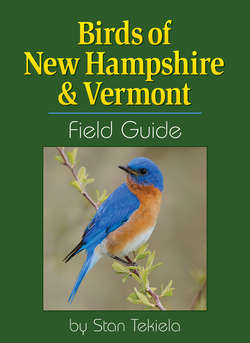Читать книгу Birds of New Hampshire & Vermont Field Guide - Stan Tekiela - Страница 35
На сайте Литреса книга снята с продажи.
Оглавлениеfemale
male
Hairy Woodpecker
Picoides villosus
YEAR-ROUND
| Size: | 9" (22.5 cm) |
| Male: | A black-and-white woodpecker with a white belly. Black wings with rows of white spots. White stripe down the back. Long black bill. Red mark on back of head. |
| Female: | same as male, but lacks a red mark on head |
| Juvenile: | grayer version of female |
| Nest: | cavity; female and male excavate; 1 brood per year |
| Eggs: | 3-6; white without markings |
| Incubation: | 11-15 days; female and male incubate, female incubates during the day, male at night |
| Fledging: | 28-30 days; male and female feed young |
| Migration: | non-migrator |
| Food: | insects, nuts, seeds; will come to seed and suet feeders |
| Compare: | Larger than the Downy Woodpecker and has a longer bill that is nearly the width of its head. |
Stan’s Notes: A common woodpecker of wooded backyards that announces its arrival with a sharp chirp before landing on feeders. This bird is responsible for eating many destructive forest insects. Has a barbed tongue, which helps it extract insects from trees. Tiny bristle-like feathers at the base of bill protect the nostrils from wood dust. Drums on hollow logs, branches or stovepipes in spring to announce its territory. Often prefers to excavate nest cavities in live aspen trees. Has a larger, more oval-shaped cavity entrance than that of the Downy Woodpecker.
